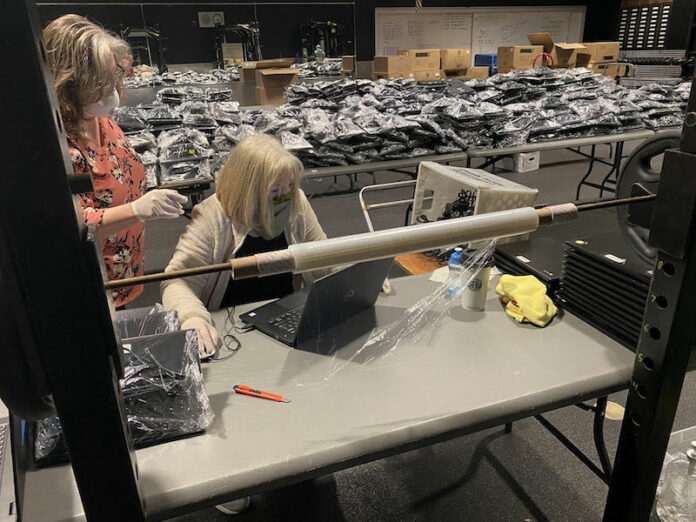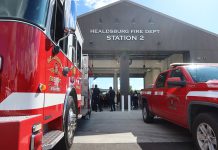Following similar decisions round the county, the Windsor Unified School District Board of Trustees voted unanimously to continue in distance learning through winter break at their meeting on Oct. 20.
The vote comes following a lengthy discussion at the previous board meeting in which Superintendent Jeremy Decker said he would bring the decision back as an item to be voted on.
“At the previous board meeting I was given direction to suspend in-class instruction through the end of the semester,” Decker said. “The board and I felt it was proper to allow for public comment, so that’s what we’re doing.”
The primary motivating factor for making this decision now is the continued negative trends in local COVID-19 case metrics, meaning the chance for Sonoma County leaving the most restrictive tier any time soon are small, plus the lengthy lead time required by the state before reopening.
“It’s Oct. 20 and we are trending the wrong direction with our cases right now,” said Decker. “We’re now over 13 cases per 100,000 daily. It doesn’t look great. At the earliest, it would be the end of November to even allow a conversation of reopening. It seems prudent at this point to suspend in-person instruction through winter semester and given clarity to families and staff. This isn’t where any of us though its where we’d be on Oct. 20. I’m certainly disappointed but it seems like the right thing to do at this time, based on where we are in Sonoma County.”
The sole public comment given on the topic was from Rebekah Rocha, the mother of a student with special needs, who believes that the governor has granted a dispensation to schools to allow small cohorts of at-risk students to return. Rocha referenced other districts, including Alameda where this was already happening. She also mentioned that at a Santa Rosa school board meeting, “the teacher’s union was blocking special ed teachers from working.”
Decker expressed sympathy but pointed out that unfortunately Sonoma County’s status in the purple/most restrictive tier makes its circumstance different than other areas she cited.
“One of the things that is really difficult for our community is to see other counties doing things differently, but the reality is that we are all in very different situations” he said. “A case rate of 13.1 is a significant number, in Alameda they are at 2.9. So, it’s a significant difference in metrics, they are in the in orange tier. I understand the frustration, even if we look toward Napa, they are at 4. A lot of counties look to be opening up and that gives them more rights to do things in person. It’s hard to compare us to anyone else because no one around us has similar numbers, we’re one of if not the highest in state and we’re trending the wrong way.
“I would also like to clarify that (Windsor District Educators Association, the teacher’s union) WDEA have been great partners,” he continued. “Nobody is holding this up but safety. None of (the discussions) have been about blocking, only trying to problem solve and work in the most collaborative way possible.”
“We’re listening to county health officials about this and there’s a lot of obstacles to overcome,” said WDEA president Pete Stefanisko. “You have to have PPE, cleaning, decide whether you’ll be indoors or outdoors or how long they’ll be there each day, a lot of things have to be in place. Nobody wants to be back in class more than teachers. Distance learning is difficult, and we miss the kids. But, until it is safe to do so, we’re not able to do it.”
One question raised in Rocha’s letter had actually been discussed earlier in the evening, during Windsor High School Athletic Director Jaime Williams’ annual report, namely how is it that sports can go to campus and start conditioning work when more vulnerable students in need of support cannot.
“It’s two different bodies,” said Decker. “Schools are governed by the Blueprint for a Safer Economy and sports are governed by something completely difference. We use California Interscholastic Federation (CIF) and industry guidance. The Blueprint for a Safer Economy details specifically how we can open schools, but athletics are not mentioned. Therefore, we go to different guidance for youth sports. We have to be outside, maintain distancing, be in a small, stable cohort and not share balls, so we can do conditioning and individual skills work. It’s simply the law, but I know it’s frustrating.
“What I have also found frustrating is with athletics being governed by different set of laws, a coach can have a team doing conditioning, but a PE teacher cannot do the same thing,” Decker finished.
Trustee George Valenzuela asked Decker when such special needs students might be able to come back in cohorts.
“We’re looking at trying to make sure we’re safe,” he said. “Even districts were allowed to open for certain cohorts in then purple tier, most didn’t. Most of them have been in the red tier. We’re looking at our metrics being closer to the red tier for special needs or vulnerable students. Most likely, we’d be looking at bringing them back when we’re in the red tier, but none of this is fully fleshed out and most likely it’ll be after winter break because we probably aren’t going to enter the red tier until December.”
“We simply don’t see a mechanism to move forward with the metrics that were seeing. Even for these high need students,” Decker concluded.









